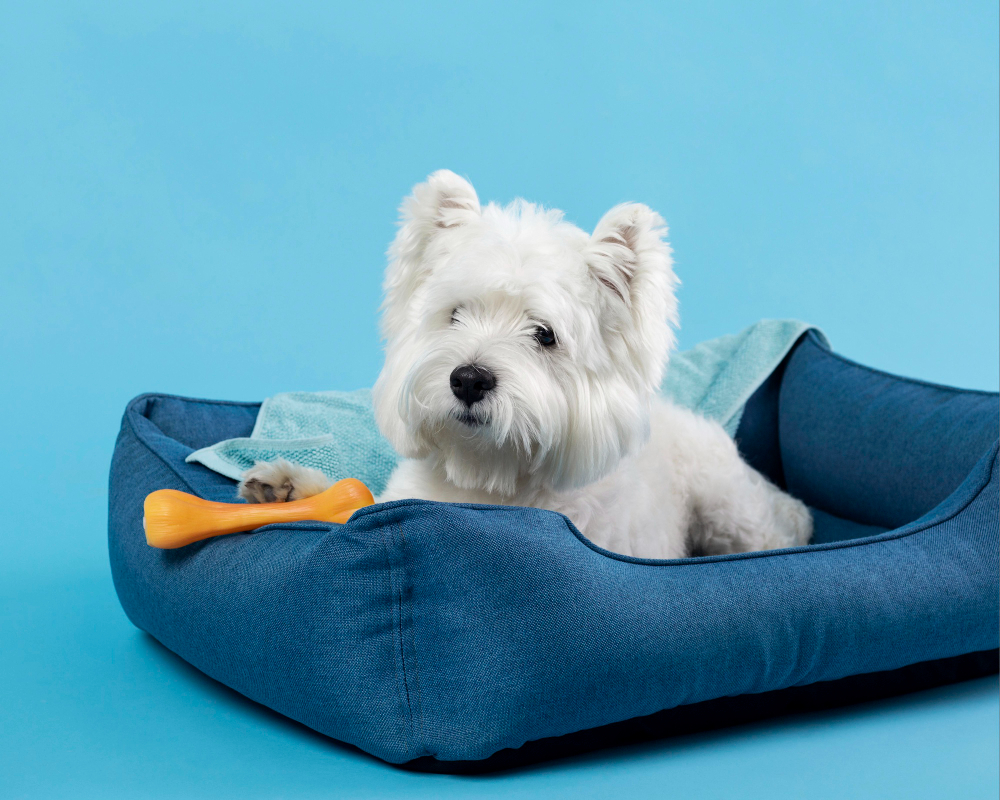On the coldest days, even the furriest dogs have a hard time dealing with the temperature. It is recommended to leave the dog indoors during the coldest and hottest periods of the day and night. However, if the pet needs to be outside the house, it is necessary to put a home for your dog in a more hidden place where such weather phenomena do not reach it. In addition, when the houses are placed against the wall, the dog can have more comfort and still avoid freezing winds.
But after all, how to heat a doghouse? Both in the houses and beds and pillows – inside the house – blankets, clothes, and comforters can be placed, so the dog will have their help to warm up and rest peacefully. However, if your dog usually destroys the covers, you can opt for natural options, which will not do so much harm if ingested by animals, such as hay and straw.
Hay for Insulation, Straw for Affordability: Pros and Cons for Dog Bedding
The best way to protect your dog from heat and cold is to build a house for him. However, the best choice is pine or cedar shavings if you want to put a wooden bed in addition to the home. Shavings of this type are soft, comfortable to lay on, absorb moisture and help control odor. Wood shavings are also environmentally safe, easy to dispose of, and naturally repel fleas and other insects.
Can You Use Hay In A Dog House?
While you need to be careful with hay as a dog bedding, it can be a good choice in many cases. Dogs that live outdoors in cold climates will benefit from the high insulation and moisture resistance that hay provides.
Does Hay Make Good Bedding For Dogs?
Although it seems like a good choice, hay can cause allergies in dogs. Therefore, it is better to opt for specially developed products for dog beds.
Is Straw Good For Keeping Dogs Warm?
Straw is typically used as a bedding material, while the hay is used as a food supplement for herbivorous animals such as cows and rabbits. Dry straw works well for building nests and padding for animals to sleep. Straw is also more practical to use as a lining than hay because of its lower cost.
Hay and Straw: Balancing Comfort and Health for Your Furry Friend
Straw breaks down quickly under the weight of a large dog, creating a pile of straw dust, which can cause respiratory problems. On the other hand, grass hay retains its structure much longer than straw, making much less dust. The best grass hay suitable for dog bedding comes from warm-season grasses. However, dogs’ sense of smell is very keen, and sleeping with these products can develop respiratory or skin allergies. So, if you choose to use these materials, pay attention to your dog’s behavior. Other animals, such as rodents, highly prize these materials, and small insects, such as spiders and scorpions, so if you choose to use these materials, be sure to clean and change these materials regularly.
5 Telltale Signs Your Dog is Feeling Cold
To identify dogs feeling cold, pay attention to some of their actions. For example, if the pet is curled up in the corner of the house, it likely needs a good blanket to keep warm. Tremors are also common features in unheated dogs. Usually, cases like these happen when the little ones leave the house outside and the temperature is even lower. As a result, the tours must be done indoors or for a shorter duration. When the dog starts breathing and moving slowly, it may feel cold. However, these characteristics are less witnessed than the others.
Stay Warm this Winter: Tips to Keep Your Dog Cozy and Comfortable
Dogs, like cats, are warm-blooded, so when their external body temperature drops, they start to feel cold, as they cannot adapt to the climate on their own. However, some dog breeds – typical of regions where the climate is extremely cold – can tolerate low temperatures, mainly due to their dense and long coats. But even these little ones can feel cold, but not like the others. Therefore, dogs are as sensitive to low temperatures as we are. For this reason, it is essential to pay attention to them during the cold seasons of the year, especially in winter and autumn. Here are some tips to keep your pet warm:
- Don’t skimp on clothes and blankets. Keep your dog’s bed very warm, even if it’s indoors;
- Reduce the amount of grooming and bathing during the winter. However, when necessary, baths must be done with warm or hot water, thus avoiding colds, flu, and pneumonia.
- Outdoor beds should be made with a material resistant to the weather, such as rain and sun.
- Decrease the walks in freezing hours, give preference to the hottest and sunny hours, but be careful with very hot soil too;
- Keep your pet in places that do not have drafts, sheltered with protection from the wind.
- Dogs can and should continue to exercise in the colder months. But remember that exercise should be light for the first 5 minutes: just like humans, dogs also need to warm up their muscles!
- Take care of fireplaces indoors and out. Never leave a fireplace or campfire unattended with a pet nearby. Always use a fireplace screen to protect your pet from soot, flames, and embers.
- Where antifreeze is available, keep it out of reach and sight, as it is toxic to dogs.
- Beware of heaters: your dog can get burned if he gets too close to a heater, or he could knock over the heater and start a fire.
- Raise the house a few centimeters off the ground or place a wooden platform or cardboard between the floor and the house floor.














